I believe I speak for everyone when I say that we have the utmost admiration for the brave men and women who serve in the military. And, to be honest, among their ranks, some exceptional individuals consistently surpass all expectations, especially in the face of life-threatening situations. They fearlessly confront and neutralize threats, venturing into arenas where only the boldest dare to venture. I am, of course, talking about the men and women of the world’s most elite special forces.
These men and women have unparalleled skill and discipline and undergo demanding selection and training processes to prepare them for warfare missions that exceed the capabilities of conventional military units. While the exact nature of their covert missions and lifesaving efforts will remain shrouded in secrecy, their recorded accomplishments have earned them international acclaim.
Today, we pay homage to the bravest of the brave. In no particular order, here are the 25 Most Elite Special Forces Units from around the world.

EKO Cobra (Austria)
 https://speci
https://speci The EKO Cobra, also known as the Einsatzkommando Cobra, was founded in 1978 and is a semi-autonomous entity under the supervision of the Austrian Federal Ministry of the Interior. In 1996, the EKO Cobra was the only special forces unit to participate in a hijacked plane rescue while in the air, and it also took part in additional hostage rescue missions. Which says a lot about Hollywood and a certain movie called Air Force One, released in 1997…
EKO Cobra battalions are organized entirely differently and are usually used for Special Missions and Clandestine Operations in enemy territory, with the potential to work in very small teams of five or six commandos.
Jaeger Corps (Denmark)
 https://special-ops.org/jaeger-corps-the-danish-elite-operators/
https://special-ops.org/jaeger-corps-the-danish-elite-operators/ The Jaeger Corps, or Huntsman Corps in English, was established 1961 as a LRRP (military long-range reconnaissance patrol) unit. The unit was modeled after the British SAS and the United States Rangers. In fact, several Jaeger officers trained in the United States and the United Kingdom in the early years of the elite force. Danish Special Forces frequently train and operate with international Special Forces such as those from the United States, the United Kingdom, Sweden, and France.
However, only a small percentage of operatives complete the selection and training cycle to become part of the Danish Special Forces. In truth, only 12 new Frogmen and 8 new Jaeger Corps are picked each year. There are six teams of two Sirius Sled Dog Patrol operatives in total, but there are no statistics on how many persons are trained for this duty. While largely unknown, Danish Special Forces have been essential in the country’s strategic and operational accomplishments, most notably in the Balkans, Iraq, and Afghan Wars.
U.S. Army Rangers (United States of America)
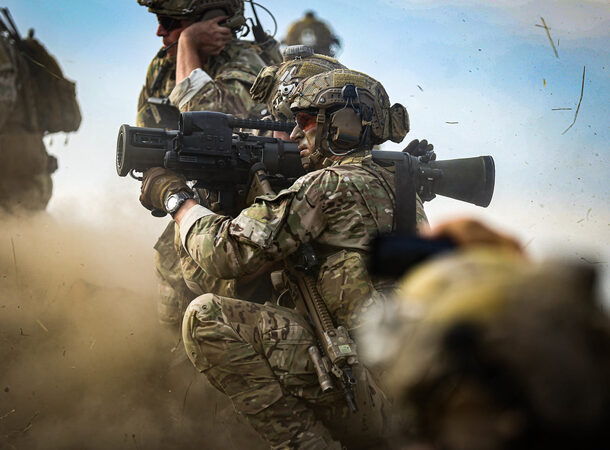 https://www.army.mil/ranger/
https://www.army.mil/ranger/ Following basic Army training, enlisting in the 75th Ranger Regiment will prepare the prospective soldier for combat diving, HALO (High-Altitude Low-Opening) parachute jumps, SERE (Survival, Evasion, Resistance, Escape), elite combative expert, mountain warfare, languages, and all weapons qualification training. After nine weeks, recruits engage in Advanced Individual Training to become masters of their chosen disciplines and promptly enroll in the Army Airborne School, followed by Ranger Indoctrination or Orientation Programs. They are so well trained by the time they graduate that members have described waking up screaming from nightmares about Ranger training, thankful that they are only in an active warzone.
Special Air Service Regiment/SASR (Australia)
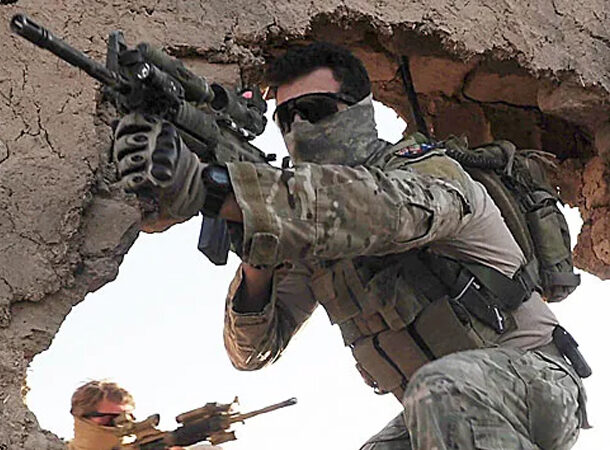 https://www.minister.defence.gov.au/media-releases/2021-09-01/special-air-service-regiment-sasr-command-control-reform-0
https://www.minister.defence.gov.au/media-releases/2021-09-01/special-air-service-regiment-sasr-command-control-reform-0 The Australian SASR (or SAS) is a highly skilled special forces unit of the Australian Defence Force that specializes in reconnaissance and counterterrorism. Its operators are well-trained and will excel in all difficult conditions in urban surroundings and challenging terrains. Similarly to its peers, the Australian SAS undergoes rigorous and brutal training, selecting only the best of its potential applicants capable of operating consistently in dynamic and high-stress circumstances. They have made substantial contributions to their national as well as global security, particularly in Afghanistan and Iraq.
SAS has also been actively involved in humanitarian and disaster relief activities, reacting to natural calamities both in Australia and internationally.
The Delta Force (United States of America)
 https://www.military.com/special-operations/delta-force.html
https://www.military.com/special-operations/delta-force.html The Delta Force is the only recognized counter-terrorism team in the United States, committed to hostage rescues, counter-insurgency, and broader counter-terrorism. Their official name is the 1st Special Forces Operational Detachment-Delta. Selection is based on a physical fitness test that includes situps and and pushups, followed by a 3-mile run in an unspecified time limit. Then, an all-night, 18-mile journey across steep terrain with a 35-pound rucksack and a compass, no map. It culminates in a 40-mile hike with a 45-pound rucksack with an even shorter time restriction. The candidate is then subjected to a battery of mental tests designed to confuse him.
If he succeeds, he can begin Delta Force training for 6 months. Firearms, heavy weaponry, and elite hand-to-hand combat training are all standard.
Shayetet 13 (Israel)
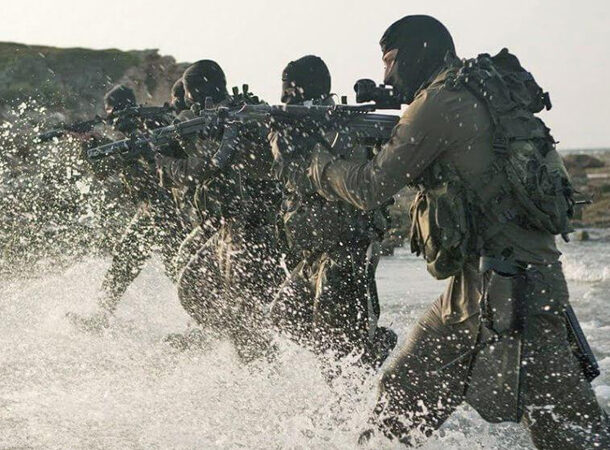 https://www.jewishvirtuallibrary.org/shayetet-13
https://www.jewishvirtuallibrary.org/shayetet-13 The name translates to “Flotilla 13,” and their official motto, “Never Again,” refers to the Holocaust. They also have an unofficial slogan which is a bit of an insider joke: “When the going gets tough, the Jews get pissed.” They are one of Israel’s three most elite special forces units and the most similar to the Delta Force. They specialize in counter-terrorism and hostage rescue, and since they reside so close to a slew of nations that appear hell-bent on annihilating them, they are always ready to travel abroad and kill. They are incredibly clandestine, but their most prominent mission was Operation Spring of Youth, in which they tracked and assassinated members of Black September in Beirut, Lebanon, in retaliation for the 1972 Munich massacre.
Aside from firearms and heavy weapons training, they also practice Krav Maga, Israel’s national martial art, which they affectionately refer to as “Jew-Jitsu.” Its worldview is built on the principle that no quarter will be demanded or granted in actual street combat. You fight to the death.
MARCOS (India)
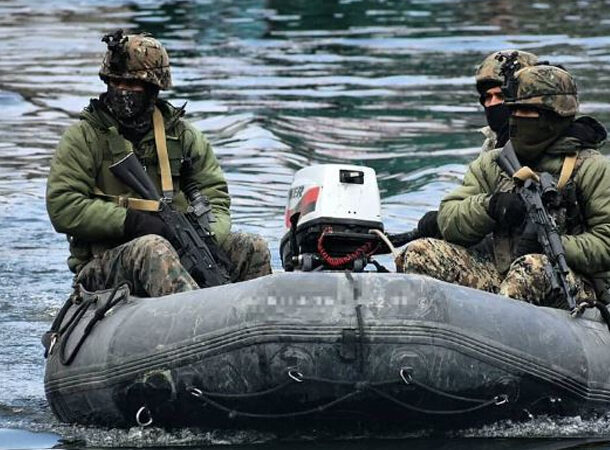 https://www.thequint.com/news/india/indian-army-operation-leech-what-was-military-operation-what-went-down#:~:text=21%20years%20ago%2C%20in%20an,the%20forces%20killed%20six%20rebels.
https://www.thequint.com/news/india/indian-army-operation-leech-what-was-military-operation-what-went-down#:~:text=21%20years%20ago%2C%20in%20an,the%20forces%20killed%20six%20rebels. India’s MARCOS is one of the units you would be wise to steer clear of. These men are the penultimate symbol of accuracy and perfection. They excel at High-Altitude Low-Opening (HALO) and High-Altitude High-Opening (HAHO) techniques, wielding cutting-edge guns, sniper rifles, and top-tier gear. Their training is based on the elite US Navy SEALs and British SAS teachings, and it includes mandatory training at the CIJW (Guerrilla Warfare) facility in Vairangte. The MARCOS has been involved in several covert missions, including Exercise Balance Iroquois 03-1/Vajrstormehar, the Kargil War, Operation Leech, and Operation Swan.
They’ve earned the moniker “Dadhiwalee fauj,” or “bearded army,” owing to their unique abilities as one of the few Special Forces groups in the world – along with the US Navy SEALs – that are trained for full-scale combat operations in aquatic conditions.
Gruppo di intervento special/GIS (Italy)
 https://greydynamics.com/the-gruppo-di-intervento-speciale-gis/
https://greydynamics.com/the-gruppo-di-intervento-speciale-gis/ GIS, the Special Intervention Group, emerged in 1978 as a distinctive tactical force within the Carabinieri, an integral component of the armed forces entrusted with enforcing both civilian and military laws. What sets GIS apart is its remarkable evolution; in 2004, it embarked on a transformative journey, assuming the mantle of a special operations unit and subsequently becoming an integral part of the esteemed Comando Internazionale per le Operazioni delle Forze Speciali (COFS).
While GIS maintains its core mission as a police tactical unit, its expansion into the realm of special forces has been nothing short of extraordinary. Beyond law enforcement, GIS has lent its expertise to safeguarding VIPs, executives, and dignitaries and has also been involved in missions in active war zones, including but not limited to Afghanistan, the Balkans, Iraq, and the Horn of Africa.
U.S. Army Green Berets (United States of America)
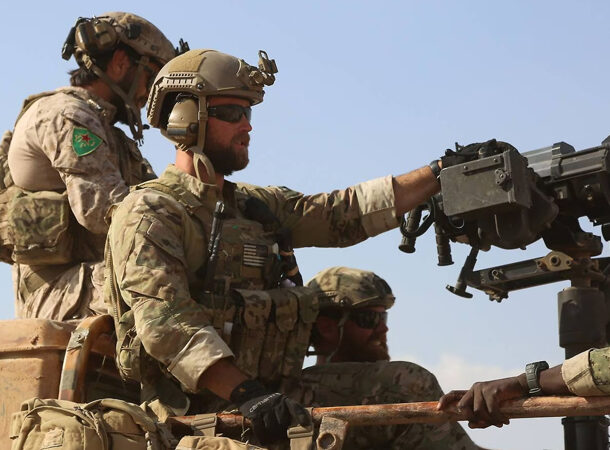 https://www.goarmy.com/careers-and-jobs/specialty-careers/special-ops/special-forces.html
https://www.goarmy.com/careers-and-jobs/specialty-careers/special-ops/special-forces.html The U.S. Green Berets are typically trained to conduct “unconventional warfare,” which means infiltrating a hostile territory ahead of a large-scale military confrontation and training local resistance groups to fight against the enemy. This has occurred, among other places, in South Vietnam, Iraq, and Afghanistan. Without local opposition, the Green Berets will infiltrate and “weaken” the enemy by “neutralizing,” AKA slitting the throats of as many of its officers as possible.
The extensive training will evaluate the recruit’s intelligence, stability, decisiveness, motivation, maturity, judgment, teamwork, physical fitness, influence, accountability, trustworthiness, and communication. 40% of applicants can convince the Army that they possess these qualities. Final training includes a variety of endurance exercises that involve carrying heavy loads over 40 miles of rough terrain with nothing but a live chicken and a knife. If the recruit can light a fire, he will have cooked chicken for dinner.
National Gendarmerie Intervention Group (France)
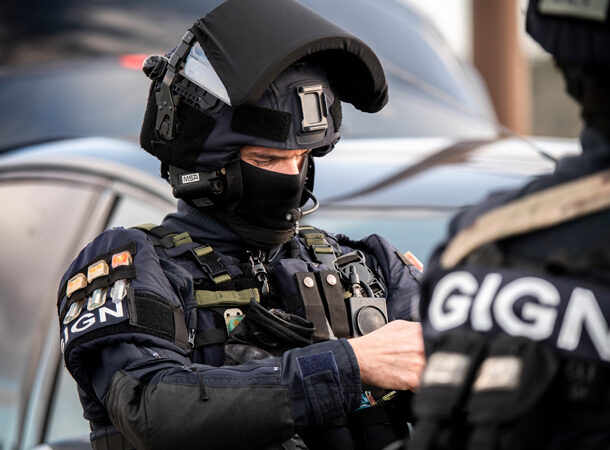 https://www.gendarmerie.interieur.gouv.fr/gign/
https://www.gendarmerie.interieur.gouv.fr/gign/ The Group D’Intervention de la Gendarmerie Nationale is one of the most combat-experienced counter-terrorist units in the world. The French GIGN, which operates somewhere between a SWAT team and Delta Force, responds to terrorist threats or domestic attacks. The adversary has evolved, and so has the GIGN. Their job is to get to the scene of an assault as swiftly as possible and then capture or kill the perpetrators before they cause more devastation.
Their training regimen is notoriously brutal and lasts fourteen months – if recruits can last that long. One documentary team tracked a group of 120 potential recruits as they were reduced to 18 in two weeks. It has one of the world’s most outstanding marksmanship schools, weapons handling, aerial courses such as HALO jumps, survival training, diving, explosive ordnance disposal, and hand-to-hand combat. These guys are deadly, but they cherish discipline. Rumor has it that they’ve been issued a 6-shot .357 revolver as their official sidearm – with only 6 shots, you can know they’ll make every, single, one, count.
Spetsnaz (Russia)
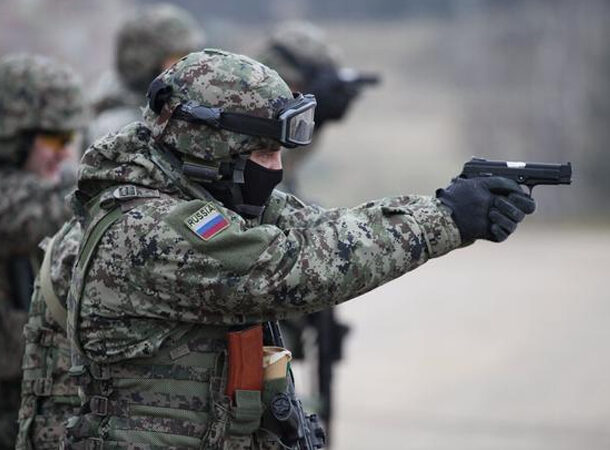 https://www.marshallcenter.org/en/publications/security-insights/spetsnaz-operational-intelligence-political-warfare-and-battlefield-role-0
https://www.marshallcenter.org/en/publications/security-insights/spetsnaz-operational-intelligence-political-warfare-and-battlefield-role-0 Whereas most military’ training regimens are designed to instruct, Russia’s Special Purpose Regiments, similar to the United States Green Berets, are subjected to punishment on a daily basis. They have the option to leave at any time. The Spetsnaz (Spe-t-s-naz) are only interested in the most skilled, battle-hardened killers.
They spar with the express objective of injuring each other, breaking ribs, fingers, and vertebrae, and only healing long enough to get back on their feet and finish the training. They are generally used for surveillance or house-to-house close-quarters combat, but they also serve as incredibly powerful bodyguards for high-ranking officials. They contend that they are not trained to ignore pain – since it is impossible. They are trained to enjoy it instead.
Alpha Group (Russia)
 https://www.britannica.com/event/Moscow-theatre-hostage-crisis-of-2002
https://www.britannica.com/event/Moscow-theatre-hostage-crisis-of-2002 The Alpha Group, the most feared unit within Russia’s notorious Spetsnaz, stands as an elite force under the Russian Federal Security Service (FSB), known to operate directly under the unwavering authority and endorsement of Russia’s highest political powers. Since its inception in 1974, the Alpha Group has made its mark on several high-profile missions, including the 1983 assault on a hijacked Aeroflot flight, the 2004 Beslan school standoff, and the unforgettable 2002 Moscow theater hostage crisis. Their formidable role in the Chechen Wars solidified their reputation for unyielding tactics and unrelenting vengeance.
This unit thrives on an almost unrestricted approach to their missions, earning them the moniker Spetsgruppa “A.” Yet, their deployment of poisonous gas during the 2002 Moscow theater hostage crisis cast a grim shadow, leading to the tragic loss of 129 hostages and drawing intense scrutiny.
Kommando Spezialkräfte/KSK (Germany)
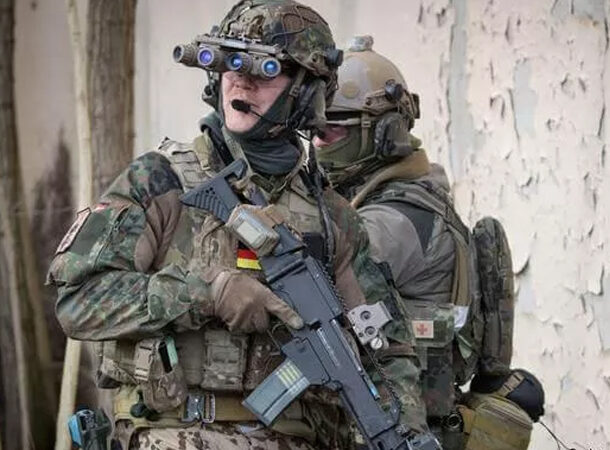 https://sofrep.com/specialoperations/germanys-kommando-spezialkrafte-ksk/
https://sofrep.com/specialoperations/germanys-kommando-spezialkrafte-ksk/ Germans are known for doing whatever they do with 100% precision. 50% is not an option. The same goes for their elite special forces unit. Within the Kommando Spezialkräfte, commonly called the KSK, an unwavering commitment to professionalism and precision is readily evident, especially when it comes to their expertise in counter-terrorism and unconventional warfare. Becoming an elite operative within this prestigious unit takes unwavering dedication and determination. Aspiring candidates are subjected to a demanding selection process that includes rigorous physical and mental evaluations, endurance tests, and team exercises.
The KSK frequently assumes a leading role in international peacekeeping missions. One of their most well-known missions involved the successful rescue of hostages during a terrorist incident in The Sahara back in 2003.
Joint Force Task 2/JTF2 (Canada)
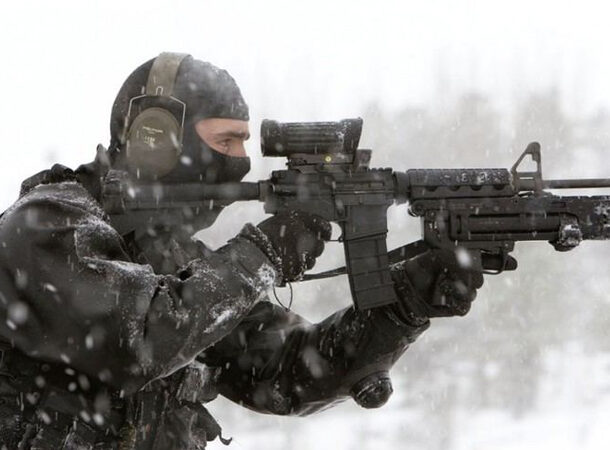 https://www.canada.ca/en/special-operations-forces-command/corporate/organizational-structure/joint-task-force-2.html
https://www.canada.ca/en/special-operations-forces-command/corporate/organizational-structure/joint-task-force-2.html From what we’ve gained during our research, it’s safe to say that JTF2 sounds like it might be one of those “we can tell you, but then we have to kill you” type units. Established only 23 years ago, this task force has seen rapid growth, today boasting hundreds of personnel. Their involvement spans various global conflicts, from rescuing detainees in Iraq to tracking down Serbian snipers in Bosnia and Herzegovina. They also had a presence in Afghanistan, where they exercised great caution in their movements.
All in all, JTF2 is an intriguing counter-terrorism organization without a name that portrays itself as “a scalpel, not a hammer.” This top-tier elite force releases very little information regarding its highly secretive missions.
Special Services Group (Pakistan)
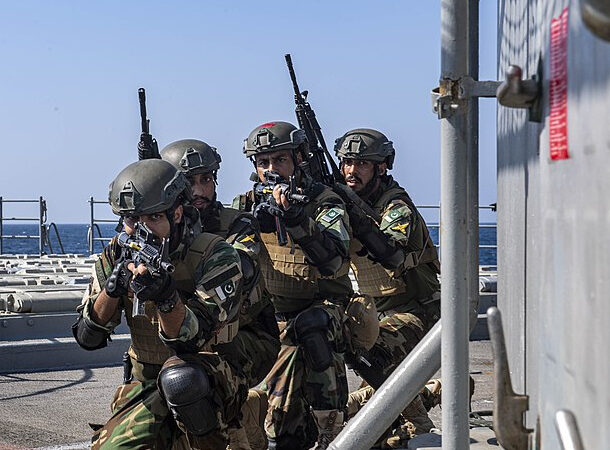 https://www.businessinsider.com.au/the-most-elite-special-forces-in-the-world-2015-5#1-the-special-services-group-ssg-in-pakistan-is-better-known-in-the-country-as-the-black-storks-due-to-the-commandos-unique-headgear-training-reportedly-includes-a-36-mile-march-in-12-hours-and-a-five-mile-run-in-20-minutes-in-full-gear-13
https://www.businessinsider.com.au/the-most-elite-special-forces-in-the-world-2015-5#1-the-special-services-group-ssg-in-pakistan-is-better-known-in-the-country-as-the-black-storks-due-to-the-commandos-unique-headgear-training-reportedly-includes-a-36-mile-march-in-12-hours-and-a-five-mile-run-in-20-minutes-in-full-gear-13 According to our research and an article on Business Insider, training for the Pakistani Special Services Group includes a 36-mile march in 12 hours and a five-mile run in full gear in 20 minutes – if that’s real… holy smokes! SSG training, designed to combat terrorism, extremism, and separatism, consists of rigorous physical conditioning, airborne school, a 25-week commando camp, and hand-to-hand combat training. According to reports, only five percent of recruits finish the arduous training.
Because of their location, they are constantly engaged in counter-terrorism missions. The SSG goes where the heat is hot, from hotspots along the India-Pakistan border to the continuing combat in Afghanistan to Operation Zarb-e-Azb, a joint military effort targeting terrorist organizations.
MI-6 (United Kingdom)
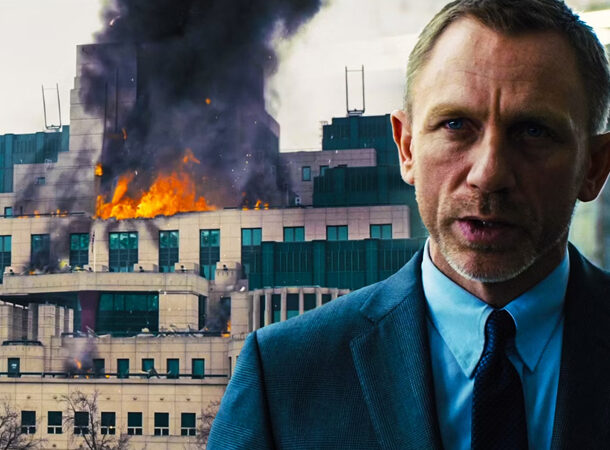 https://www.politics.co.uk/reference/mi6/
https://www.politics.co.uk/reference/mi6/ The UK’s Security Service or Secret Intelligence Service personnel, known as Section 6 or MI-6, closely collaborates with Section 5, also known as MI-5. MI-5 primarily focuses on counter-intelligence and counter-espionage.
MI-6, on the other hand, is responsible for identifying and neutralizing foreign intelligence threats before they pose a risk to the country. Their headquarters are located at Vauxhall Cross in London. While they might not claim to have a James Bond among their ranks and describe their tasks as fairly routine, they do have an agent who oversees equipment and weaponry for each mission, reminiscent of the famous “Q.” Whether this includes a sleek Aston Martin DB5 with machine guns and an ejector seat remains a mystery.
GROM/Group for Operational Maneuvering Response (Poland)
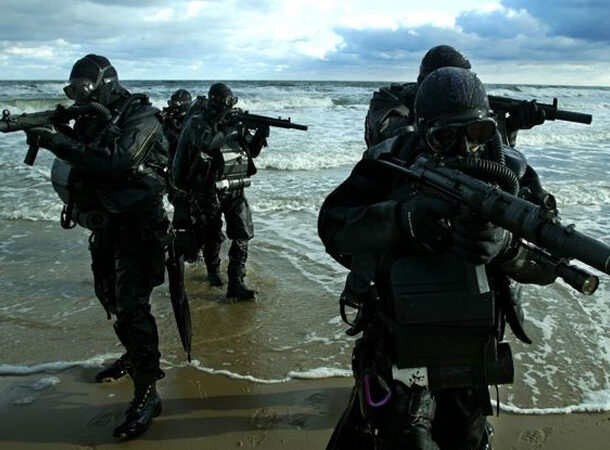 https://www.wearethemighty.com/popular/foreign-awards/
https://www.wearethemighty.com/popular/foreign-awards/ GROM, short for Group for Operational Maneuvering Response, derives its name from the Polish word meaning “thunder.” This unit has its roots in the World War II Polish paratroopers who were known as “the Silent Unseen,” which consisted of an astounding 315 men and one (extraordinary) woman.
The formation of GROM can be traced back to Operation Bridge in 1990, a mission that aspired to facilitate the migration of Soviet Jews to Israel. Its creation was prompted by intelligence reports of a significant Hezbollah threat in their operational area. The unit remained a closely guarded secret until 1994, when it was deployed to Haiti as part of Operation Restore Democracy. GROM’s missions vary and include rescue missions, hostage retrieval, and counter-insurgency activities. They have extensive expertise in various military specialties, including precision parachuting, pyrotechnics, amphibious insertions, diving, vehicle handling, weaponry, and medicine.
MARSOC (United States of America)
 https://www.marsoc.marines.mil/
https://www.marsoc.marines.mil/ Only men are allowed to try out for the US Marine Corps Forces Special Operations Command. Its principal objectives are specialized reconnaissance, decisive action, and internal defense within other nations. Their training program is divided into four parts that increase in difficulty. SERE training, survival, evasion, resistance, and escape are all part of Phase 1. Depending on where they are deployed, they are trained to create fire through friction, fire through mirrors, and even fire through ice. Following that, they begin physical fitness training and hand-to-hand combat, performing a hybrid of the most practical martial arts: Jeet Kune Do, Wing Chun, Karate, Jiu-Jitsu, and even Pankration and Sayoc Kali, or Filipino knife fighting.
Marksmanship, amphibious demolitions, and reconnaissance are all part of Phase 2. Phase 3 is basically a continuation of Phase 2 but includes field radios and satellite data-uplink systems. Phase 4 is “irregular warfare” training, which is code for “anything goes.” This phase mainly comprises the Derna Bridge operation, which requires recruits to employ all skills learned throughout the course.
Special Naval Warfare Force (Spain)
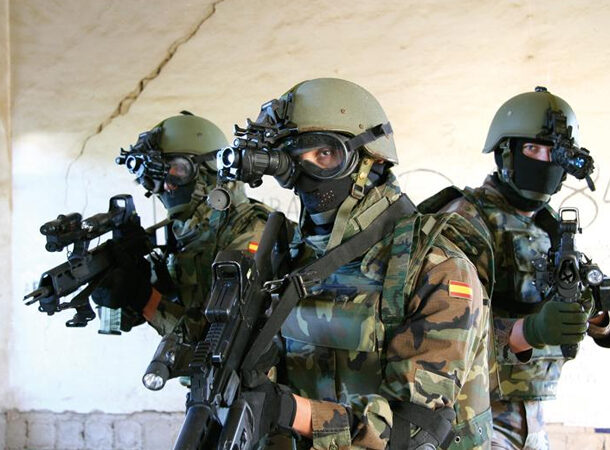 http://www.bbc.com/news/world-africa-14868671
http://www.bbc.com/news/world-africa-14868671 Spain’s Special Naval Warfare Force was formed in 2009 when the country combined multiple units of the Spanish Navy into a single combatant body. Today, a group of Special Explosive Diffusers Units, Special Combat Divers Units, and Special Operations Units make up the “Fuerza.” The Special Operations Unit was in charge of maritime counter-terrorism, air and amphibious insertion, combat diving, combat search and rescue, and ship-boarding – today’s elite outfit continues the fight.
They have a long history of using those strategies in hostage rescue and pirate confrontation. In 2002, the Hombres Rana aided Operation Enduring Freedom in the Indian Ocean by storming a North Korean vessel shipping SCUD missiles to Yemen. Then, in 2011, they saved a French hostage from Somali pirates. And that’s just what the general public knows; like the other elite units on this list, most of their assignments are classified.
French Naval Commandos (France)
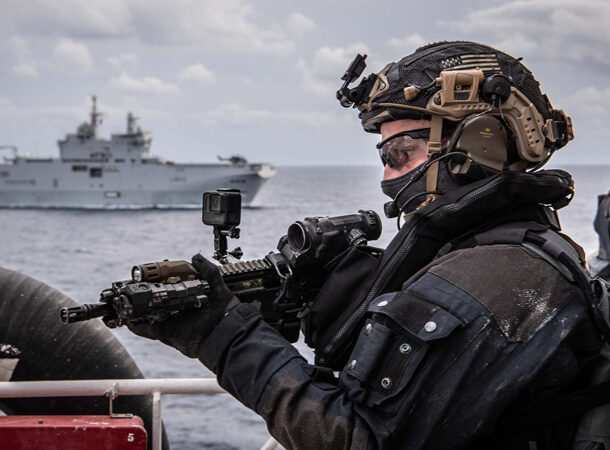 https://sofrep.com/sofre
https://sofrep.com/sofre The Naval Commandos (or Commandos Marine in French) of France are a Special Forces unit operating under the Naval Rifle and Special Forces Command and the Special Operations Command. Each unit is trained for specialized missions, such as close-quarters sea combat, exfiltration, combat diving, canine units, and long-range fire support, which includes snipers and missile launchers.
The Naval Commandos have been operational since 1947, although its origins may be traced back to World War II when the well-known Phillipe Kieffer modeled a squad of Free French Navy volunteers after the British commandos. Kieffer led these men ashore during the D-Day invasion on June 6, 1944, and assaulted the town of Ouistreham. It remains their most famous battle. Candidates for modern Naval Commandos must be Fusiliers Marins with a minimum of 9 months of service and will enter what is regarded as one of the toughest courses of NATO Special Operations Forces.
Royal Navy's Special Boat Service (United Kingdom)
 https://www.wearethemighty.com/history/cockleshell-heroes/
https://www.wearethemighty.com/history/cockleshell-heroes/ The slogan of the Royal Navy’s Special Boat Service, one of the most clandestine and elite military groups in the United Kingdom, is “Not by strength, but by guile.” The UK’s SBS is the equivalent of the US Navy SEALs. The elite team selection procedure has a 90% failure rate and includes a demanding 4-week endurance test that grows increasingly difficult and finishes with a 40-kilometer march – that’s 24.8 miles for my American friends – that must be accomplished in under 20 hours. And that is only Stage 2 of the training process.
Before being officially inducted into the elite unit, graduates must have mastered weapons handling, complex fighting, jungle training, and combat survival. The SBS was formed during World War II and is still one of the most renowned units in the world today. Since 9/11, the SBS has been deployed against the Taliban, Al Qaeda, and ISIS, as well as on rescue operations around the world, including in Sierra Leone and Libya.
Navy SEALs (United States of America)
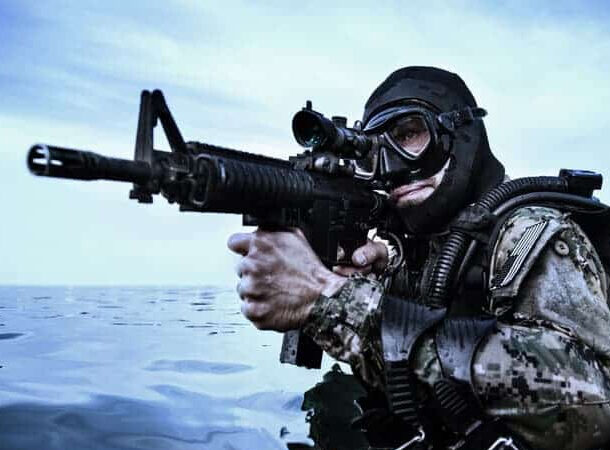 https://www.military.com/special-operations/about-the-navy-seals.html
https://www.military.com/special-operations/about-the-navy-seals.html Given the number of action movies devoted to these invincible warriors, you may believe there are many, yet there are only roughly 2,000. They are the United States’ most elite specialized warfare combatants. They are trained in the same areas as the other US special forces but to a greater level of skill. SEAL training lasts a year and requires a male between 17 and 28 years old, perfect eyesight, and a physical screening exam that is beyond belief. Recruits must be able to do (at minimum) a 500 yd breast or combat sidestroke swim in under 12:30, 50 sit-ups in 2 minutes, 6 pull-ups from a dead hang, 42 push-ups in 2 minutes, and be able to run 1.5 mi in pants and boots in under 11:30.
Then comes the training. Physical conditioning, diving, and land warfare training for 24 weeks, followed by 26 weeks of SEAL training. Then comes specialization in whatever domains a SEAL unit requires proficiency in, such as sniper, language specialist, rope climbing, diving, jumpmaster, covert entry, dynamic entry (door breacher), etc.
British Special Air Service/SAS (United Kingdom)
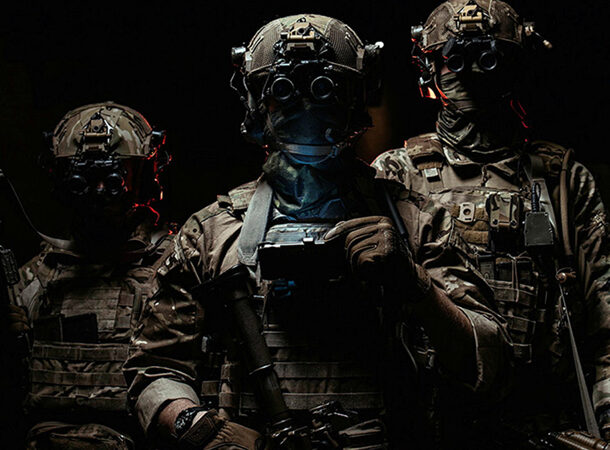 https://www.eliteukforces.info/special-air-service/
https://www.eliteukforces.info/special-air-service/ The Special Air Service has the skills to perform just as well in all of the fields outlined for SEALs, but it is additionally educated by MI-5 and MI-6 for in-depth counter-espionage, significantly more than the SEALs. Physical competency must be on par with SEALs, to the point where both elite groups work closely with one another when required (Iraq and Afghanistan) while demonstrating good camaraderie.
They wear a tan beret, as do the United States Army Rangers, and both the SAS and SEALs undergo training in knife fighting by specialists in Apache Indian knife techniques, together with Jeet Kune Do, Krav Maga, Sayoc Kali, and, for the past few years, the Keysi Fighting Method, made famous by Chris Nolan’s “Batman” films. In many ways, they are the model upon which all national commando groups are based.
Snow Leopard Commando Unit (China)
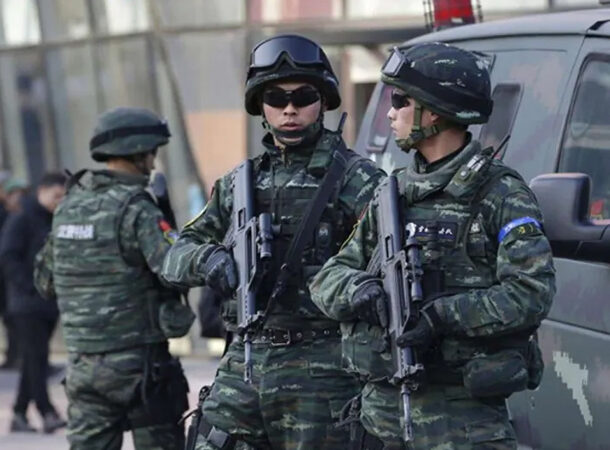 https://sofrep.com/news/10-things-to-know-about-the-secret-chinese-snow-leopard-commando-unit/
https://sofrep.com/news/10-things-to-know-about-the-secret-chinese-snow-leopard-commando-unit/ This elite unit from the People’s Republic of China was previously known as the Snow Wolf Commando Unit, referencing Arctic wolves’ tenacity and aptitude to live in harsh environments. The unit went through five years of top-secret training to carry out counter-terrorism, riot control, anti-hijacking, and bomb disposal operations during the 2008 Summer Olympics in Beijing. During combined anti-terrorism drills, they trained alongside Russian special task force troops to ensure peace and stability.
The unit takes pride in its marksmanship’s speed and accuracy, strength and stamina, and attitude of self-sacrifice. Before undertaking physical and psychological testing, each recruit must serve in the People’s Armed Police for 1-2 years. Their strongest suit may be martial arts and close-quarters combat, but their sniper squadron should not be underestimated.
The Sayeret Matkal (Israel)
 https://www.jewishvirtuallibrary.org/sayeret-matkal
https://www.jewishvirtuallibrary.org/sayeret-matkal Israel’s Sayeret Matkal, sometimes known as “Unit 269,” is a highly secretive special operations unit with practically legendary status. Sayeret Matkal has earned a reputation for its deep surveillance capabilities, as well as counter-terrorism and hostage retrieval missions, since its creation in 1957. They rely on secrecy, striking in limited numbers and disguise, disappearing before the other side realizes what happened.
One of its most notable missions was the Entebbe rescue in 1976 when terrorists hijacked an Air France plane carrying 250 passengers from Tel Aviv to Paris. The non-Israeli passengers were freed, but 106 prisoners remained. The rescue mission took a week to prepare and slightly more than an hour to carry out. The disguised task team was airlifted in with a Mercedes-Benz and Land Rovers. They infiltrated the local army, killed the terrorists, and rescued all but four of the hostages. Only one Israeli soldier perished in the attack.



























